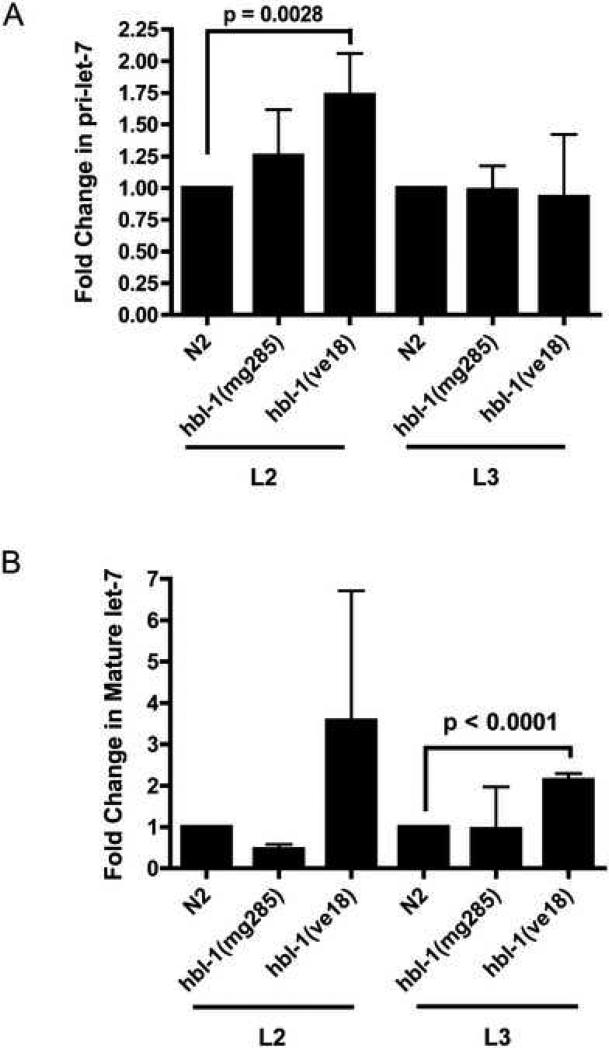Figure 5.
Levels of SL1-spliced pri-let-7 and mature let-7 are increased in hbl-1 loss-of-function mutants when measured by qRT-PCR. (A) The amount of SL1-spliced pri-let-7 during the L2 stage was significantly increased by approximately 75% in the hbl-1(ve18) mutant. The hbl-1(mg285) mutant also showed an increase in the amount of SL1-spliced pri-let-7 present in the L2 stage, but this value was not significant. The SL1-spliced pri-let-7 levels in the hbl-1 mutants return to levels similar to those detected in wild-type C. elegans during the L3 stage. The standard deviations are shown. (B) Levels of mature let-7 are significantly increased by approximately 2-fold during the L3 stage in the hbl-1(ve18) mutant. The increase in let-7 in hbl-1(ve18) in the L2 stage is not statistically significant. The standard deviations are shown. Paired t-tests were used to measure statistical significance. Three technical replicates from two independent biological replicates were assayed for each column in Fig. 5.

